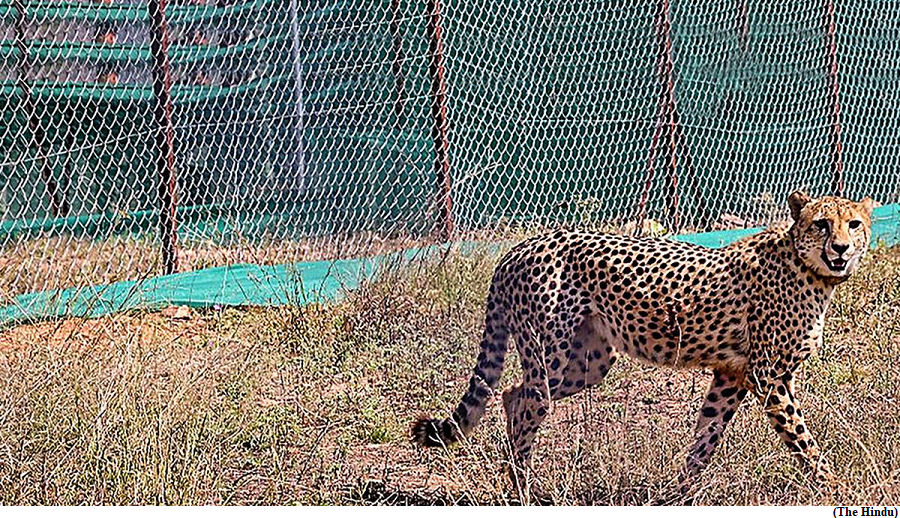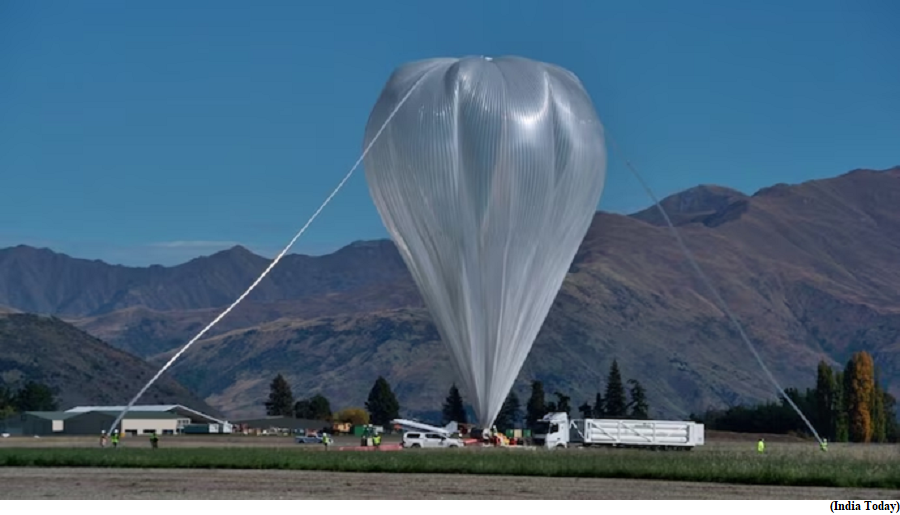New committee to keep watch on cheetah project (GS Paper 3, Environment)

Why in news?
- Following the death of three cheetah cubs recently, the Centre appointed a new steering committee, comprising national and international experts, to oversee the implementation of Project Cheetah.
- The cubs were born to a translocated Namibian cheetah at the Kuno National Park in Madhya Pradesh in March 2023.
Composition:
- The 11-member Cheetah Project Steering Committee will be led by Rajesh Gopal, secretary-general, Global Tiger Forum and formerly of the India Forest Service and closely associated with Project Tiger.
- The members include scientists from the Wildlife Institute of India, Dehradun; some experts from the NTCA; and the Madhya Pradesh Forest Department.
- Also on the committee are international experts, including Adrian Tordiffe, veterinary wildlife specialist, University of Pretoria, South Africa; Laurie Marker, Cheetah Conservation Fund, Namibia; Andrew John Fraser, Farm Olievenbosch, South Africa; and Vincent van dan Merwe, manager, Cheetah Metapopulation Project, The Metapopulation Initiative, South Africa.
- Several of the international experts have been involved in the cheetah translocation project from Namibia and South Africa.
Mandate:
The committee’s mandate is to
- monitor the progress of the cheetah reintroduction programme and advise the Madhya Pradesh Forest Department and the National Tiger Conservation Authority;
- to decide on opening up the cheetah habitat for eco-tourism and, suggest regulations in this regard, and
- to suggest ways to involve the local community in the project activities.
Tenure:
- The committee will be in force for two years and will convene at least one meeting every month, besides conducting field visits to the Kuno National Park.
Navy elite marine commandos to be part of Gaganyaan post landing recovery
(GS Paper 3, Science and Technology)
Why in news?
- The Indian Navy's elite marine commando unit, also called Marcos, will be part of the recovery operations of the Gaganyaan Mission after it lands into the ocean from space.

Details:
- The Indian Space Research Organisation and the Navy released a joint plan to train the crew involved in the recovery operations of the capsule after it lands in the ocean with astronauts onboard.
- The team involved in the recovery operations include divers, MARCOs, medical specialists, communicators, technicians & naval aviators.
- The plan was released at the Water Survival Training Facility (WSTF) INS Garuda in Kochi.
Key Highlights:
- The document outlines the training plan for recovery of the Crew Module for the mission. It defines overall requirements wrt training of various teams participating in recovery operations.
- The training is planned in incremental phases starting from unmanned recovery to manned recovery training in harbour and open sea conditions.
Crew Module Recovery Model:
- The recovery operations are being led by the Indian Navy in coordination with other government agencies.
- ISRO also handed over the Crew Module Recovery Model to the Navy for training the crew.
- The mass and shape simulated mockup of the crew capsule will be used for familiarisation and training of Gaganyaan recovery teams.
Background:
- ISRO is pushing fast in its ambitions to send Indians into space and wrapped up two big tests with the Gaganyaan mission in April 2023. It test-fired the L110-G Vikas Engine that will power the mission.
- ISRO also conducted the System Demonstration Model (SDM) tests for Crew Module Propulsion System for the Gaganyaan mission.
Way Forward:
- ISRO is now looking to conduct the maiden abort test of the Crew Module, during which a special launch vehicle will be fired with the simulated crew module on top.
- The test will simulate the situation when the mission will have to be aborted moments after launch.
Balloon carrying SuperBIT telescope successfully flies for 39 days
(GS Paper 3, Science and Technology)
Why in news?
- NASA has successfully completed the final flight test of its ambitious balloon that can carry a telescope to the edge of space and return safely.

Details:
- The super pressure balloon carrying the Super Pressure Balloon Imaging Telescope (SuperBIT) landed after 39 days and 14 hours of flight after being launched from Wanaka Airport of New Zealand on April 16.
- The Wanaka Airport is a long-duration balloon program launch site for NASA.
- The balloon operators from Columbia Scientific Balloon Facility in Texas, sent flight termination commands on May 25 after identifying a safe landing site.
- The balloon then separated from the payload rapidly deflating, and the payload floated safely to the ground on a parachute.
Landing:
- The balloon touched down about 122 kilometers northeast of Gobernador Gregores in Argentina.
- The balloon completed a record five full circuits about the Southern Hemisphere’s mid-latitudes, during its nearly 40-day-long flight, while flying at an altitude of 1,08,000 feet.
- The decision to deflate the balloon was taken after the team analysed that the predicted flight path would have taken the balloon more southerly with little exposure to sunlight, creating some risk in maintaining power.
Way Forward:
- NASA said that the space agency will next launch a science mission from the Agency’s Columbia Scientific Balloon Facility in July.
- The space agency conducts 10 to 15 flights each year from launch sites worldwide.




